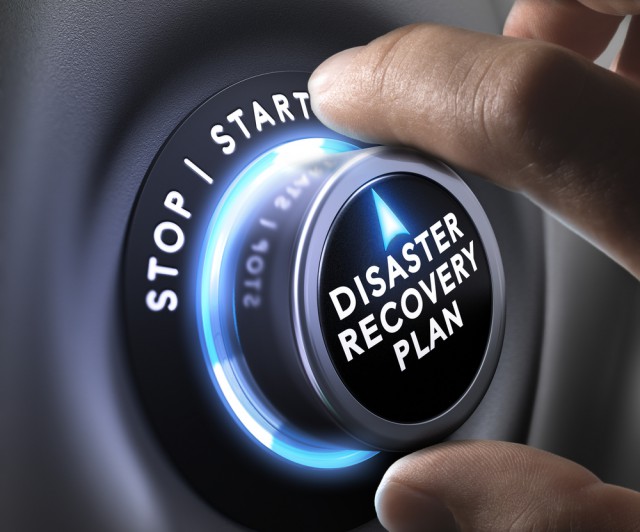Ransomware, meet DRaaS: The future of disaster mitigation

Picture this: It’s 2031, and you’re chief information security officer (CISO) at a Fortune 500 company. Alongside many other innovative and emerging threats, you’re constantly battling AI-empowered bad actors. In fact, you spend the majority of your working hours combating emerging forms of ransomware. These dangerous incursions occur once every two seconds -- more than 43,000 attacks every day -- and all organizations are extremely vulnerable.
Although harsh, this scenario may soon become a reality. Threat actors are learning to use more refined tactics to infiltrate valuable consumer data, and it’s paying dividends. In 2023 alone, ransomware attacks increased by 68 percent.
The nature of ransomware is also evolving. For example, double and triple extortion techniques are becoming increasingly popular. Meanwhile, encryption-only attacks are falling out of favor, replaced by threats, extortion and theft schemes, all invoking new concerns about data blackmail.
CISOs and other IT leaders must level up to confront this brave new world of ransomware. Specifically, they should consider innovative disaster recovery (DR) solutions like disaster recovery as a service (DRaaS), which prepares organizations for the worst in the wake of disaster.
The "when," not "if" mentality
Many stakeholders don’t view ransomware as a mission-critical problem until it’s too late. Leaders must challenge this mentality to avoid severe and frankly inevitable financial consequences. Ransomware is a critical threat to business continuity for enterprises and small and mid-sized businesses. And it’s only becoming more rampant by the year.
In 2023, 66 percent of global organizations reported being hit by ransomware. Of that percentage, 84 percent lost business or revenue, with the average ransom clocking in at $1.54 million -- nearly double 2022’s median ransom of $812,380. These numbers spell trouble for financial outcomes. Moreover, the ramifications of a breach go well beyond direct losses.
After suffering a ransomware attack, companies can expect data breaches and service interruptions. These events erode customer confidence and damage a company’s reputation in the long term. Industry research indicates that companies suffering from data breaches, including ransomware, see their stock performance lag behind market averages by nearly 15 percent three years after an attack.
Leaders should consider these statistics as they review their cybersecurity posture. By acknowledging the pervasiveness of ransomware (and its increasing success rate), organizations can allocate an appropriate amount of time and resources to proactive cyber protection strategies. That includes traditional measures like incident response, business continuity strategies and risk mitigation approaches like DRaaS.
DRaaS combats the rising tide of ransomware
Cybersecurity experts have advocated for proactive cybersecurity postures that defend against ransomware and other threats. However, even the most proactive protection has become insufficient. As ransomware agents grow more advanced, no environment should ever be considered fully impenetrable. After all, nearly 100 percent of IT decision-makers have experienced an outage in the past three years. Thus, leaders must prioritize cyber defense protocols alongside leading DR solutions like DRaaS.
DRaaS is a cloud-based service model that protects many organizations from their worst-case scenarios by relying on rapid recovery solutions to restore data and services with minimal downtime. In the event of a natural disaster, cyberattack or any other disruptive event, DRaaS enables organizations to quickly restore critical infrastructure and focus on eradicating malware from their systems more efficiently.
DRaaS differs from other DR solutions in terms of comprehensiveness. Its components include:
- Semi-annual testing: Ransomware agents develop new techniques and skills frequently, so semi-annual or continuous testing is paramount to maintaining proper DR. DRaaS tests will troubleshoot the system’s response to different cyberattack scenarios, providing peace of mind when a disaster inevitably occurs.
- Immutable data repositories: DRaaS providers can protect replicated data from attackers by rendering it read-only once written. This way, data cannot be changed or deleted.
- 24/7 monitoring and disaster response: DRaaS providers maintain system uptime by continuously monitoring all data backups and infrastructure. When an event is declared, these teams work to eradicate threats 24/7.
- Isolated recovery infrastructure: This infrastructure provides a location separate from the attack surface/production so recovery can occur without impacting forensic investigations or removing indicators of compromise.
- Disaster recovery process and documentation: Tested, rehearsed and documented DR Plays enable leaders to threat-hunt and eliminate malware in isolated DR environments.
- Recovery portals: CISOs and IT leaders can assess the testing status and costs associated with their DRaaS solution through SaaS-based recovery portals.
- Ongoing support: Because DRaaS involves a third-party provider, these solutions are typically accompanied by customer support, including ongoing software troubleshooting and onboarding needs.
These vital components of DRaaS are becoming more attractive to leading CISOs in all industries, with experts predicting the global DRaaS market will reach $12.23 billion later this year, up 27.4 percent from 2023.
If these numbers indicate anything, it’s that ransomware is evolving -- fast -- and reliable disaster recovery is essential. By embracing DRaaS, organizations ensure their DR strategy advances alongside bad actors, prohibiting disaster from becoming truly disastrous.
Photo Credit: Olivier Le Moal/Shutterstock
Adam Scamihorn is Product Director, Cloud at InterVision.
